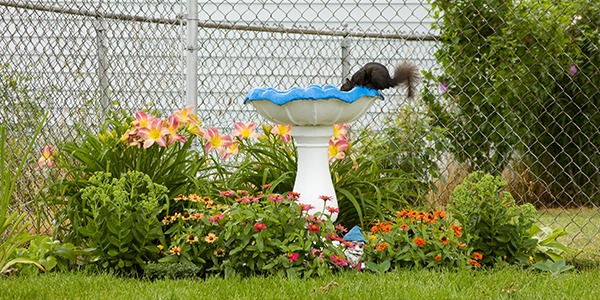Biodiversity is the biological variety and variability of life on Earth. And unfortunately, due to several factors that include land use, pollution, climate change, and the use of invasive plants, our natural biodiversity is rapidly dwindling. Although we often think about global efforts such as nature preserves as the main factor in maintaining biodiversity, our lawns are crucial. In the United States alone, lawns account for an estimated 40 to 50 million acres. As a result, individuals are now looking to their yards to create habitats that support biodiversity. You can learn how to transform your space into a hotspot for biodiversity by developing your lawn with several natural elements such as pollinator plants, birdhouses, water sources, and more!
Create a Hotspot for Biodiversity with Native Plants and Vegetation
You can increase biodiversity in your lawn by adding native plants and vegetation to attract pollinators and wildlife. There are several ways to accomplish this including, naturalizing your lawn by allowing natural vegetation such as wildflowers or clover to take its place. If this seems too extreme and you worry about your HOA regulations, there are options such as free zones and raised beds. You can designate an area in your lawn that can grow wild and free or create an island bed devoted to pollinators.
When planning your pollinator garden, you should also consider adding plants of all shapes and sizes to offer refuge for wildlife. In the right habitat, they can effectively hide from predators and get out of the elements. For example, milkweed is a plant variety that attracts monarchs and their offspring, and shrubs can offer refuge for birds and other wildlife.
Add a Water Source in Your Garden
Water is essential for wildlife to survive, and it is becoming exceedingly scarce over time. To promote biodiversity in your yard, you should add a water source that caters to animals. If you don't have direct access to a river or lake, there are options like ponds, water fountains, or birdbaths that will do the trick. The key is to add fresh water daily and to keep the area clean. If you are concerned with mosquitoes, try incorporating a source of water that flows like a birdbath or a water fountain. Additionally, when you increase the biodiversity in your lawn, you are also attracting mosquito's natural predators such as birds, bats, frogs, and spiders.

Take Care of Your Soil and Create Shelter for Wildlife
A healthy yard also contains healthy soil filled with diverse organisms that contribute to essential services such as nutrient cycling, soil carbon sequestration, and even lowering greenhouse gas emissions. To enhance soil, you should add organic matter such as mulch, compost, and lawn clippings. Besides good soil, you should also create shelter for wildlife to create a hotspot for biodiversity. And you can accomplish this by layering logs, boulders, and mulch to create natural nooks and crannies for wildlife to live in. If you don't have a tree or want to avoid piling logs, you can also integrate birdhouses, bat houses, and pollinator houses. These alternatives look great while also providing animals with a place to nest, store food, or roost.
Sustainable Alternatives with Kurtz Bros., Inc.
We have an array of organic soil, mulch, and compost to help boost biodiversity in your lawn. And we also offer green infrastructure products and services to keep our waterways clean for wildlife habitat, recreation, navigation, and consumption. Contact us if you have any questions! We would be happy to help!
